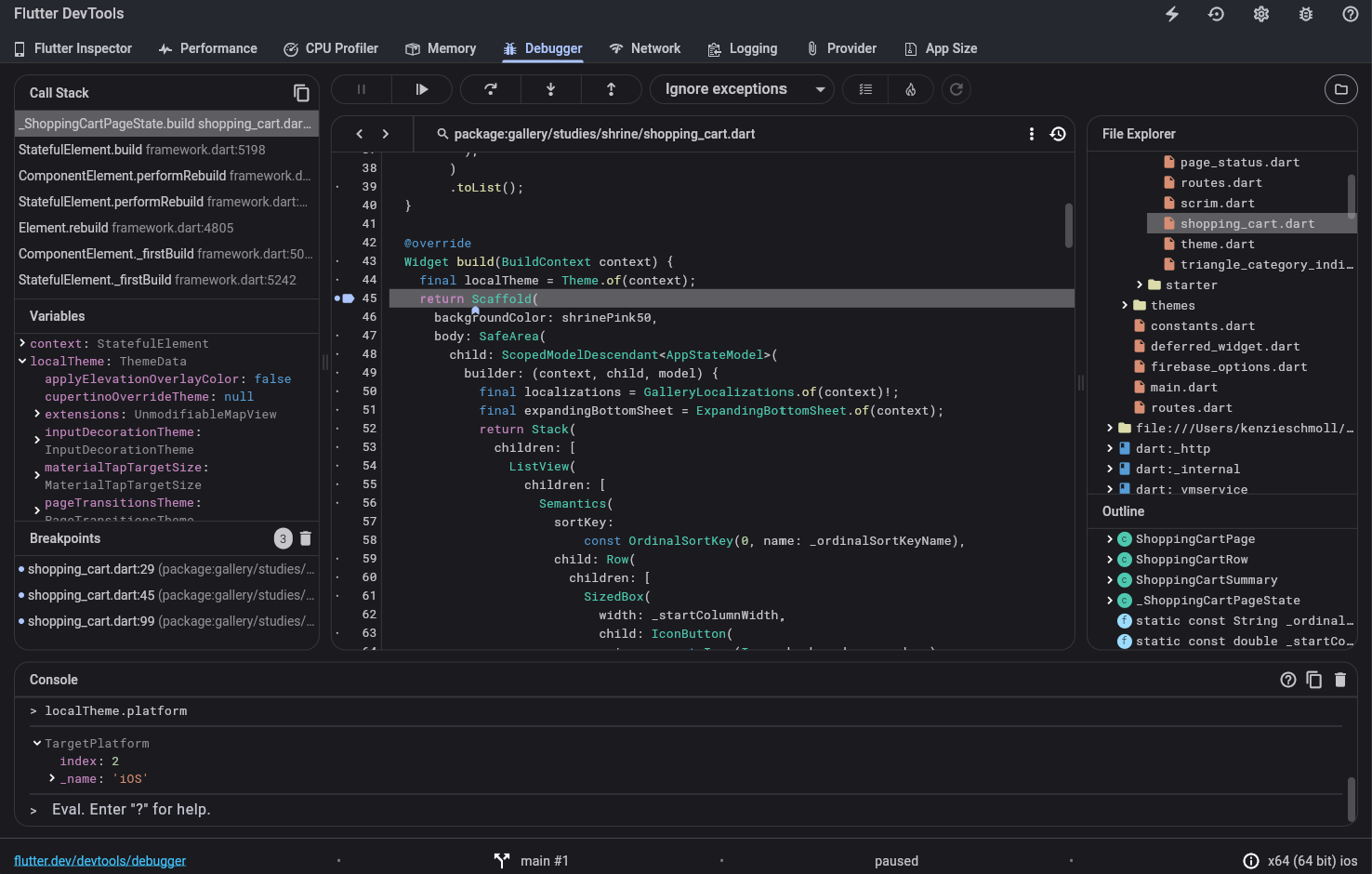Flutter is Google's answer to "what if we just drew everything ourselves?" It uses the Skia graphics engine to render every single pixel, which means your app looks exactly the same on iPhone 6 and iPhone 15 Pro. That's great for design consistency, terrible for making iOS users feel at home.
The Reality: Hot reload works most of the time, until it doesn't and you're back to full restarts wondering why you didn't just write native. The infamous RenderFlex overflowed by 18 pixels error will haunt your dreams, and debugging Flutter web is like debugging with your eyes closed. Flutter 3.27 (December 2024) finally brought stateful hot reload to web, which helps, but web performance is still trash.
Flutter apps are chunky as hell - the framework adds 4-8MB to your app size because it has to include the entire rendering engine. Check out Flutter's performance best practices and app size optimization guide to minimize the damage. But hey, at least your loading spinner looks identical on every platform.
When it breaks: "Have you tried turning it off and on again?" becomes your mantra. `flutter clean && flutter pub get && flutter run` fixes 90% of weird issues. Check the Flutter GitHub issues for the other 10%.

React Native: JavaScript Everywhere (Even Where It Shouldn't Be)
React Native lets you use JavaScript to control actual native UI components through a bridge. If your team knows React, this sounds amazing. If they don't, prepare for some learning curves.
The Reality: Metro bundler crashes more often than Windows ME, and the 'could not connect to development server' error shows up for literally no reason - usually when you're demoing to stakeholders. Android and iOS builds break differently for the same code, and upgrading React Native versions is basically Russian roulette.
The New Architecture with Fabric and TurboModules is supposed to fix performance issues, but migrating feels like performing surgery on a moving patient. React Native 0.76 (October 2024) finally enabled the New Architecture by default, which means fewer bridge bottlenecks but more migration headaches for existing apps.
When it breaks: Clear Metro cache, restart the bundler, sacrifice a goat to the JavaScript gods. In that order.
npx react-native start --reset-cache
## The nuclear option when nothing else works
Kotlin Multiplatform: Share Logic, Debug Twice
Kotlin Multiplatform promises to let you share business logic while keeping native UIs. In theory, this is brilliant. In practice, you're debugging the same bug in three different IDEs.
The Reality: Setting up iOS compilation on Windows is basically impossible. The documentation is scattered across 47 different websites. You still need to know Swift/Objective-C for iOS-specific stuff, and "business logic sharing" sounds great until you hit platform-specific edge cases. Kotlin 2.1 (November 2024) introduced basic Swift export support, but it's still experimental and you'll probably break something trying to use it.
Netflix, Cash App, and other major companies use it, which is encouraging, but they also have teams of people whose full-time job is making this stuff work.
When it breaks: Good luck. You're debugging Kotlin compilation to Objective-C that gets compiled to ARM64. The error messages are about as helpful as a null pointer exception.
Architecture: KMP compiles your Kotlin business logic to native code for each platform, while UI stays completely native.
Bottom Line: Pick Flutter if you want everything to look the same everywhere and don't mind fighting iOS design guidelines. Pick React Native if your team already knows JavaScript and React, and you can tolerate Metro crashes. Pick Kotlin Multiplatform if you have complex business logic to share, senior mobile devs, and a high tolerance for setup pain - or if you're Netflix with unlimited engineering resources.
The choice ultimately comes down to what pain you're willing to accept: Flutter's platform integration headaches, React Native's JavaScript bridge quirks, or KMP's complexity tax.





